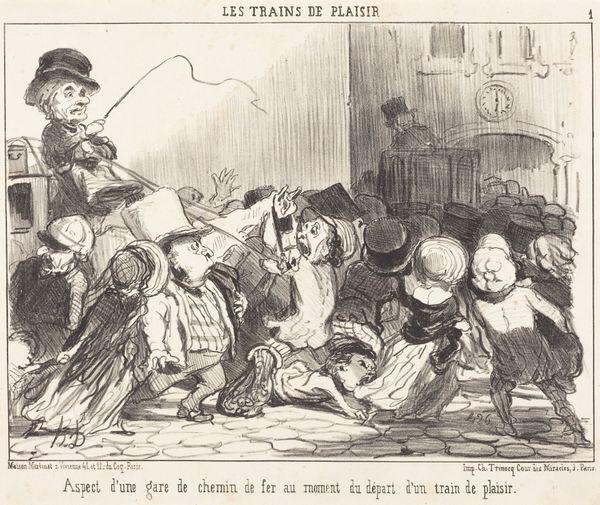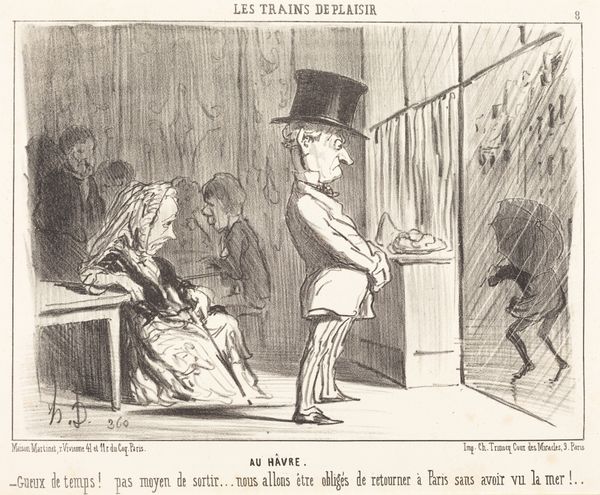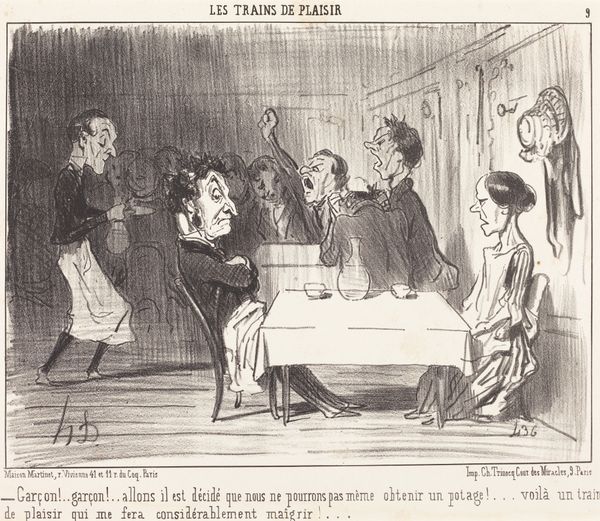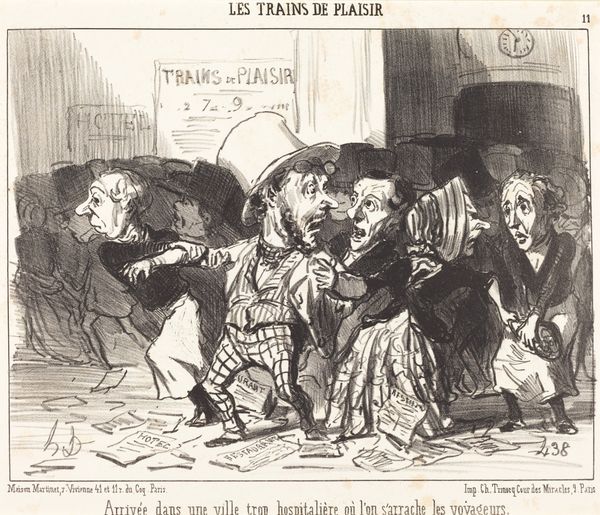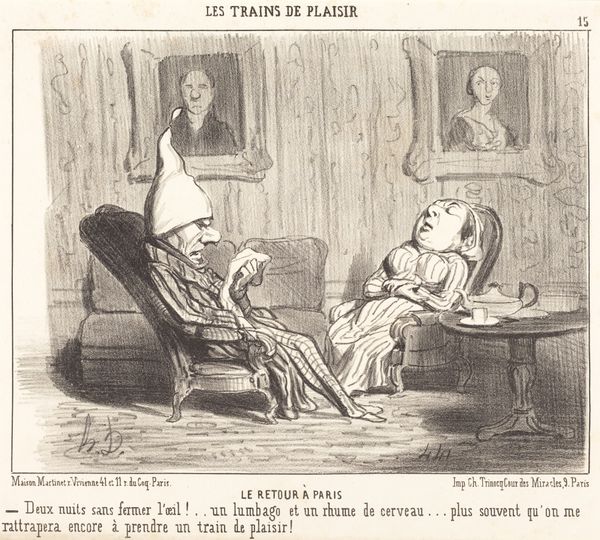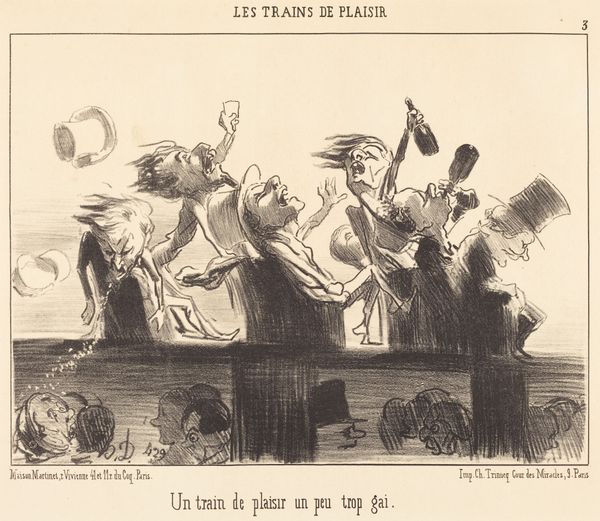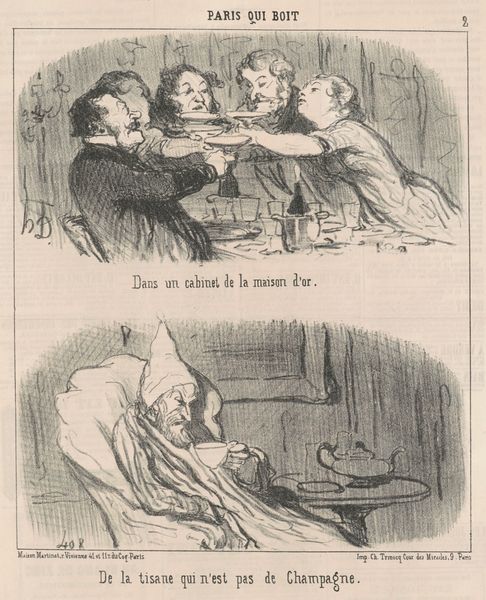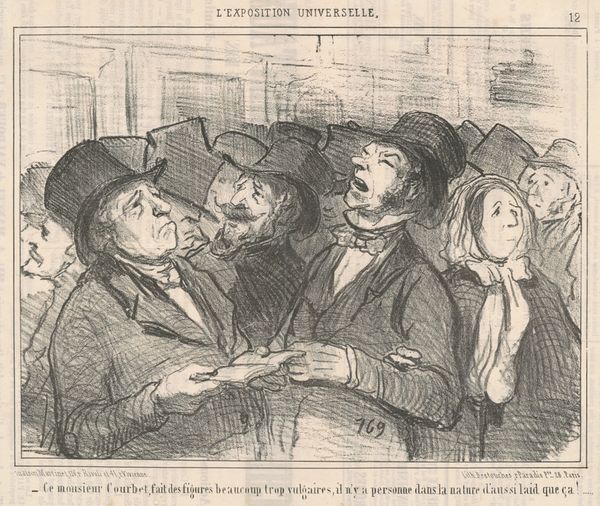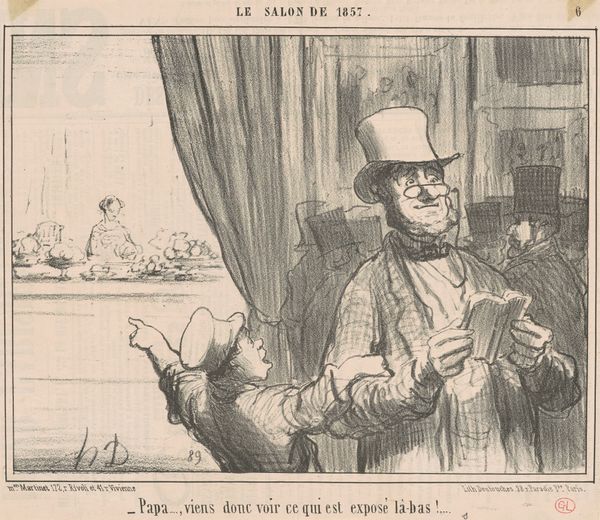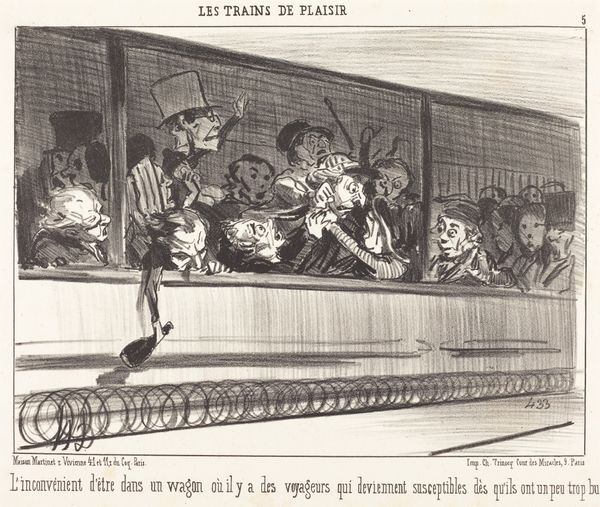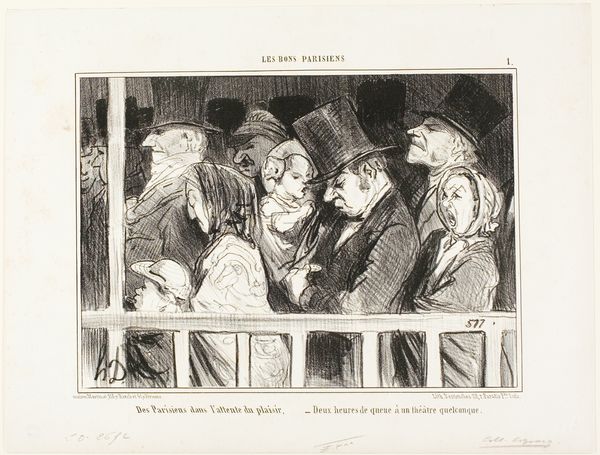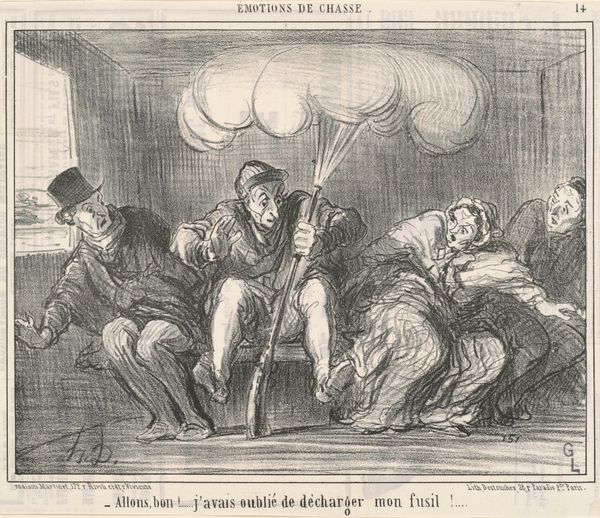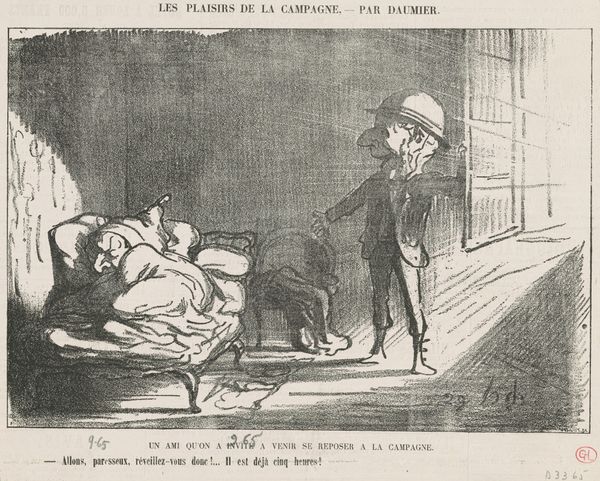
Copyright: National Gallery of Art: CC0 1.0
Editor: This is "Un Train de plaisir," or "A Train of Pleasure," a lithograph print by Honoré Daumier from 1852. There's definitely some tension there between the idea of pleasure and the way the artist depicts these weary passengers, crammed together on what appears to be a very uncomfortable train ride. What stands out to you in terms of the making and production of this piece? Curator: What strikes me is Daumier's clever use of lithography to democratize art. Printmaking allowed for wider circulation, enabling the masses to access social commentary. Consider the implications: mass production making satire available. Who does it reach and how is meaning constructed when art can be reproduced en masse? Editor: So the meaning is tied to the process? Curator: Exactly. The content critiques the bourgeoisie and perhaps the rapid development of mass transportation, but its *form*, its material existence, relies on those very developments in industrial printing. Are the satirical prints then consumed ironically or does it influence broader social dynamics? What is being commodified here – a leisure experience gone awry or critique and awareness itself? Editor: It’s like he's using the tools of the system to critique the system itself. So the materiality – the print itself and the means of its distribution – become part of the artwork’s message, that maybe even critique and resistance can become consumer goods. Curator: Precisely! Think of the socio-economic implications of a rapidly expanding urban audience for these readily available lithographs, compared to an exclusive oil painting. This accessibility changes the role of art, potentially sparking social change. The art changes due to materials but it also changes society because of the materials. Editor: That gives me a lot to think about, especially when considering art forms and who has access to them today!
Comments
No comments
Be the first to comment and join the conversation on the ultimate creative platform.
